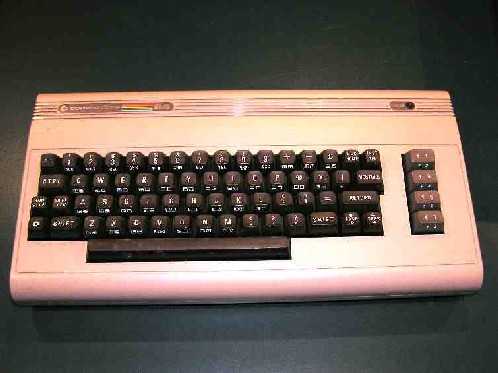





|
NAME |
C 64 |
|
MANUFACTURER |
Commodore |
|
TYPE |
Home Computer |
|
ORIGIN |
U.S.A. |
|
YEAR |
1982 |
|
END OF PRODUCTION |
1993 |
|
BUILT IN LANGUAGE |
Basic |
|
KEYBOARD |
Full-stroke 66 keys with 4 function keys |
|
CPU |
6510 |
|
SPEED |
0.985 MHz (PAL) / 1.023 MHz (NTSC) |
|
COPROCESSOR |
VIC II (Video), SID (Sound) |
|
RAM |
64 KB |
|
ROM |
20 KB |
|
TEXT MODES |
40 columns x 25 lines |
|
GRAPHIC MODES |
Several, most used: 320 x 200 |
|
COLORS |
16 + 16 border colors |
|
SOUND |
3 voices / 9 octaves, 4 waveforms (sound output through TV) |
|
SIZE / WEIGHT |
40.4 (W) x 21.6 (D) x 7.5 (H) cm / 1820 g |
|
I/O PORTS |
RGB (composite, chroma/luma and sound in/out), 2 x Joystick plugs, Cartridge slot, Tape interface (300 bps), Serial, User Port, TV RF output |
|
BUILT IN MEDIA |
Cassette unit. Provision for 170 KB 5.25'' floppy disc unit (1541) |
|
POWER SUPPLY |
External power supply unit |
|
PRICE |
$595 (USA, 1982) - ё229 (U.K. 1984) |
|
Commodore C-64
|
|
The C-64 was an up-market version of the VIC-20. A wide range of
software packages, games and programming languages was available for this machine, which was itself
available practically anywhere from a toyshop to a business supplier.
|
